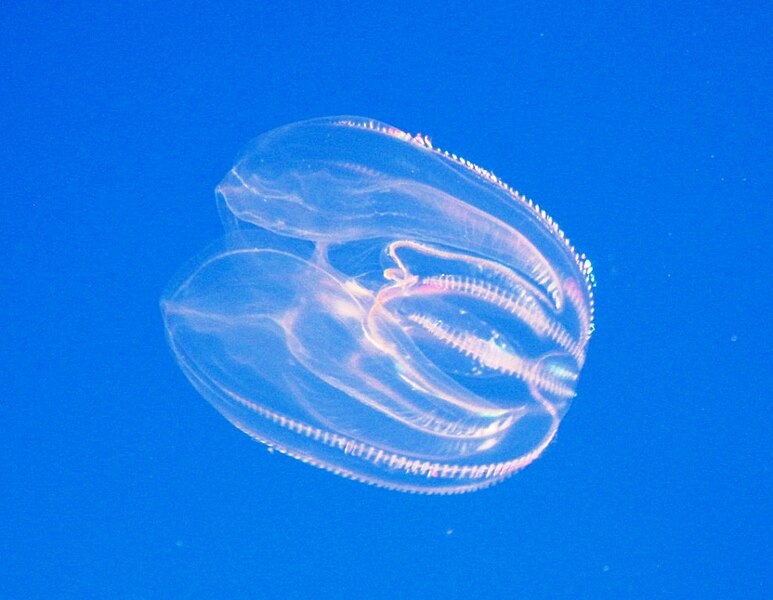
 As a crucial element to the success of the metazoans, the nervous system represents an important evolutionary development. By studying the most ancient definitive nervous systems present in basal metazoans, Simmons et al aim to uncover the evolutionary origins of the neural cell type.
As a crucial element to the success of the metazoans, the nervous system represents an important evolutionary development. By studying the most ancient definitive nervous systems present in basal metazoans, Simmons et al aim to uncover the evolutionary origins of the neural cell type.
Today, in EvoDevo, the results of Simmons et al’s study into the genome of the ctenophore Mnemiopsis leidyi, provide insights into the patterning of sensory cells. Mark Martindale, one of the authors, explains ‘By probing the full genome of Mnemiopsis leidyi, we found that it has a genetic complement of LIM homeobox (Lhx) gene neural transcription factor su bfamilies more similar to that of the sponge (which do not possess neurons) lineage than to the complete repertoire found in placozoans, cnidarians, and bilaterians, providing further evidence for the basal position of ctenophore and sponge lineages relative to Parahoxazoans (Placozoa, Cnidaria, Bilaterian).’
bfamilies more similar to that of the sponge (which do not possess neurons) lineage than to the complete repertoire found in placozoans, cnidarians, and bilaterians, providing further evidence for the basal position of ctenophore and sponge lineages relative to Parahoxazoans (Placozoa, Cnidaria, Bilaterian).’
The results suggest that Lhx genes are likely to play a role in the patterning of sensory cells in the ancestor of sponges and ctenophores. Martindale concludes that the evidence ‘suggests that Lhx genes play a combinatorial role in sensory cell fate specification in both ctenophores and sponges and support an hypothesis that neurons evolved from primitive sensory cells’.
Latest posts by Rhiannon Meaden (see all)
- Guinea pig teenagers are highly domesticated - 9th April 2014
- Goats, the boffins of the farmyard - 26th March 2014
- Developments in Daphnia - 25th March 2014
Comments